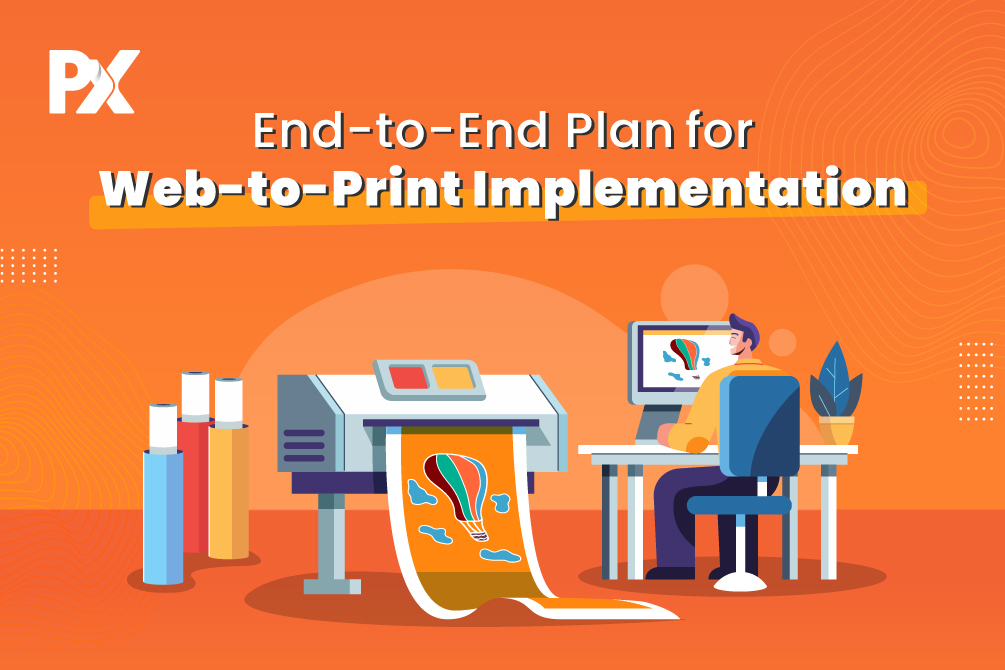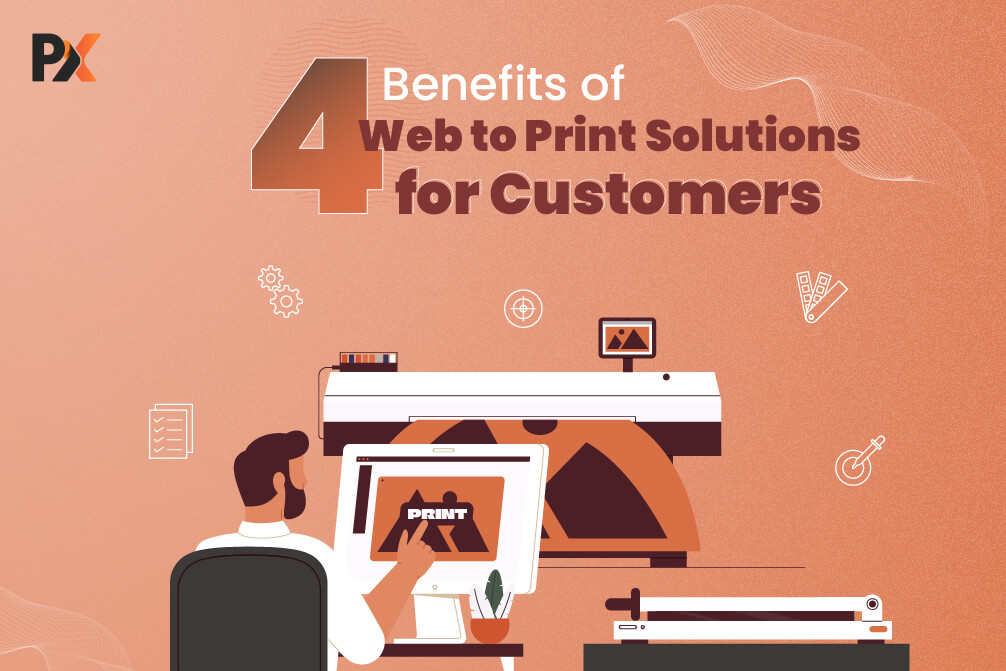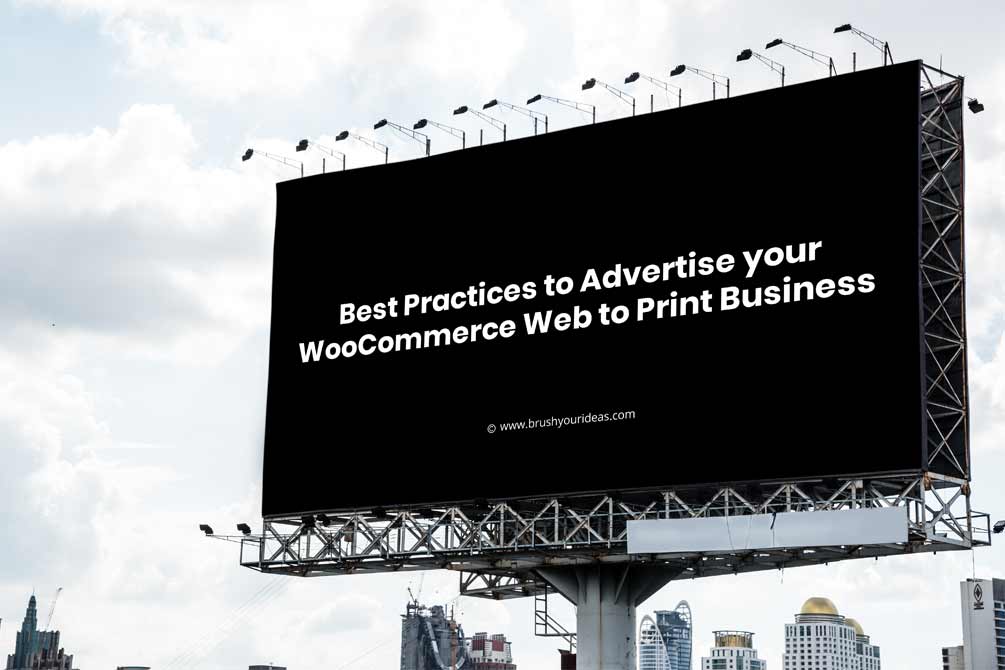Summary
At Drupa 2024, talks on innovation took center stage. One such offering that stole the show was web-to-print. This powerful tool is revolutionizing the printing industry, grabbing the attention of businesses everywhere.
Today, we will discuss what you need to know before implementing web-to-print for your business. So, let’s get started!
Why web to print is crucial for the future?
Tech has disrupted almost all industries, and the printing industry is no exception. Print businesses have started adopting technology. Some businesses have done it for one part of the business, while others have completely digitalized it.
When it comes to increasing ROI in these tough times when margins are narrowing, there is a labor shortage, and raw material prices are increasing, the web-to-print software is a ray of hope.
Check out the portfolios of businesses from different industries who have implemented web-to-print solutions and benefited from it.
Guide to web-to-print implementation for printing companies
Step 1: Find the right web-to-print solutions
Finding the best web-to-print solutions to meet your business goals requires thorough research. Numerous suppliers are available on the market, each with unique features and functionalities. However, the one you choose should fulfill your criteria. For example, it should have elements related to customization, ease of use, scalability, customer support, and compatibility with your current system. Once you find all of these parameters you were looking for, it is time to move further.
Did you know web-to-print can be used by Advertising Firms, B2B Print Agents, Photographers, Artists, and B2B Print Service Providers?
Get a detailed understanding of web-to-print, future trends, who can use it, and why it is a must-have for your business.
Step 2: Understand your audience and their requirement
If you cannot fulfill your client’s requirements, no solution will be able to give you the best results. Give top priority to elements like product customization options, delivery schedules, and ease of use. Make the overall experience with your brand memorable for your customers and increase the likelihood of recurring business. Try to optimize your consumers’ preferences for a more personalized experience. For example, if your customers are demanding bag personalization options, you will need an online product design tool. This tool will help them customize the bags.
Step 3: Communication is the key
The next step is to have a foolproof plan for web-to-print execution. Here, it is important to maintain good communication with your service provider, as they will explain how they operate and various other things that they have. It is essential that you have a person of contact (POC) or a small team to engage with the web-to-print solutions provider to maintain good communication. Proper communication helps in proper web-to-print implementation.
Also, it is important to inquire about all relevant information, such as the functioning formula, technical product expertise, and the approval procedure needed at each level. This will assist you in maintaining clarity and averting issues in the future with your service provider. At this point, it’s also crucial to make sure your team requests the necessary paperwork to start the project. You will be able to stay in control and obtain all the information you need to launch your web-to-print store. After this step is over, you should start preparing for the web-to-print execution phase.
Step 4: Share required information
After you have negotiated the technical specs, it’s time to share your print business data with your web-to-print solutions supplier. Your supplier cannot tailor your web-to-print storefront to meet your demands until you provide the essential information.
Your logo design and graphics, standard keywords, product entries, catalogs, customer reviews, and product costing are a few of the most crucial pieces of information you need to share. Ensure that you have comprehensive files containing all of this important information ready. Being proactive will make it easier for your web-to-print supplier to integrate them into your business. But when something is lacking in your print firm, they may also assist in creating new components.
Step 5: Demand an interactive user interface
User experience is one of the most important factors if you want your web-to-print business to flourish. Your main goal should be to create an interface that is easy for users to use and meets their needs. Ensure the web-to-print supplier you work with provides you with a dynamic platform that makes it simple for your clients to navigate and alter designs. One of the most important parts of any print or POD business is custom designing, thus having an easy-to-use website is a must.
In addition, your storefront needs to be mobile responsive so that users can easily browse, design, and place orders from anywhere. To make sure that your consumers have an even easier and more interesting ordering experience, there should be clear and simple instructions as well as interactive design previews.
Step 6: Choose payment gateways
Make sure to include all the payment gateways that are most used by your customers. If you have clients worldwide, make sure the payment gateway you choose is accepted internationally. Additionally, using secure and reliable payment channels will help you win your consumers’ trust. Customers prefer platforms that have SSL certificates, encryption, and secure payment integration.
Lastly, you need a well-thought-out strategy for product shipment and delivery. Request your service provider to automate the shipping and delivery module. One benefit is that customers can view shipping costs in real time based on the product category.
Step 7: Build your workflow & test
After completing the above procedures, it is time to assess how the web-to-print technology is being implemented in your business. The new web-to-print environment will unite several verticals, such as your departments, teams, and products. So, you will need to set up login credentials (if needed) and grant access to every team member involved.
For instance, your accounting staff should be fully aware of and in charge of print order administration, including billing and taxes. Choose POCs and create login credentials for the accounting team members who can use the system in real time.
Check whether each designated user has the necessary access. Test the flow for all the departments. See whether anyone is facing an issue regarding access or whether the web-to-print flow is different from the actual flow. Make changes if required.
Step 8: Actual web-to-print implementation
It is time to launch your website. You have two options: ask your web-to-print solutions provider to do it for you or let your in-house team do it. For a smooth installation, it is better if your solution provider takes care of your website launch.
Make sure to test your website thoroughly. Especially the checkout process; it should run smoothly and the order should be added to the web-to-print ERP.
Also, make your website SEO friendly. Add primary keywords that will help you reach your target audience. Making SEO friendly website will help you reach the right audience.
Step 9: Analyze, analyze, analyze
Now that your web-to-print technology is operational focus more on marketing your offering. Use various channels, such as social media, email marketing, paid advertisements, and more, to spread the word about your business.
You also need to monitor and evaluate your storefront’s performance regularly. If you find any issues that need improvement, you should let your web-to-print provider know right away. When assessing performance, it’s important to keep in mind some critical KPIs, such as conversion rates, customer evaluations, user behavior, order volumes, and more.
Difficulties in web-to-print implementation
Change is inevitable. Despite knowing this, there is still much resistance to accepting the change. This is one of the major reasons why many print businesses are still following traditional methods.
Businesses cannot make the most of the web-to-print solutions because of the resistance from their in-house team. Sudden changes in the process are overwhelming, and people often find it difficult to accept the abrupt changes.
Note: Read more about overcoming the “Top Challenges of Web-to-Print” by clicking here.
But we can make the process smoother if we know what is coming. Here are some highlights of the challenges you can expect.
1. Cost Inflation
2. Labor Shortage
3. Thinning Margins
4. Not Engaging Your Customers
5. Getting Too Techie and more…
A lot of print businesses have successfully completed web-to-print implementation and have significantly increased their overall revenue
Do you want the same for your business? Read this blog on web-to-print implementation challenges to learn about all the challenges, how to overcome them, and which industries can benefit most from web-to-print implementation.
Are you ready to implement web-to-print solutions?
Investing in a web-to-print solutions is like outsourcing your menial tasks. Your team can spend more time on other services that do not require manual intervention.
Using an end-to-end web-to-print solutions can significantly increase your ROI. You can focus more on new opportunities and serving your customers with the best experience.
If you are interested in web-to-print implementation for your business, get in touch with team PrintXpand.
All product and company names are trademarks™, registered® or copyright© trademarks of their respective holders. Use of them does not imply any affiliation with or endorsement by them.



